This is the fifth in a series of tests on the Sony 100-400 f/4.5-5.6 GM zoom. The series starts here.
This continues the test in the previous post, but at 200 mm focal length instead of the 100 mm of that post.
Test conditions. Sony 100-400 mm f/4.5-5.6 GM OSS on the Sony a7RII and the Nikon 80-400 mm f/4.5-5.6 G ED on a Nikon D810. ISO set to 640 to keep the shutter speed up. Shutter set to EFCS for both cameras. Manual focusing in both cases. Four shots at each setting and I picked the best one. 5-second self-timer for the a7RII, and Mup + 3 sec shutter delay for the D810. Arca-Swiss C1 Cube on RRS sticks. The focus was in the center of the image, and all images were refocused at each aperture. I developed all the images in Lightroom with default settings, except for Exposure to roughly equalize brightness and white balance set to Cloudy. The distance from the camera to the trees in the center of the image was a bit over 100 meters as measured with a Nikon rangefinder. Unfortunately, the head shifted between the two runs with each camera/lens combination.


I exported tight crops from the developed images as 700-pixel-tall JPEGs. That means that the images are all heavily upsampled. The Nikon images are 320% of their original size in both dimensions. The a7RII images are at 295%. The different ratios are necessary to compensate for the variations in the height of the sensors when measured in pixels.
If you just want a rough idea of the differences, just look at the images as displayed in-line in the posts. However, if you wish to compare these images in detail, you should view these images by clicking on them to see the source files, then setting your browser for 100% zooming. Even better, download them and make Photoshop stacks.
No matter what you do, these crops are all going to look horrible. I’m blowing them up so much so that they will represent the original file after JPEG’s discrete cosine transform has had its way with them. If you want to get a good idea of what the images would look like printed, get far away from your monitor. No, farther than that. Put a bunch of the images up on the screen and back up until the best one starts to look good. Then look at the others. There’s another reason why these images won’t look like the best thing the camera/lens combination can deliver. They’re demosaiced with Lightroom. Lightroom is not awful, but for a particular image, there are usually better raw processors. I use Lr because it’s a de facto standard, because I know it well, and because it’s got good tools for dealing with groups of images.
In the approximate center of both images.


As before, most of the sharpness differences you’re seeing are attributable to the lower resolution of the D810.
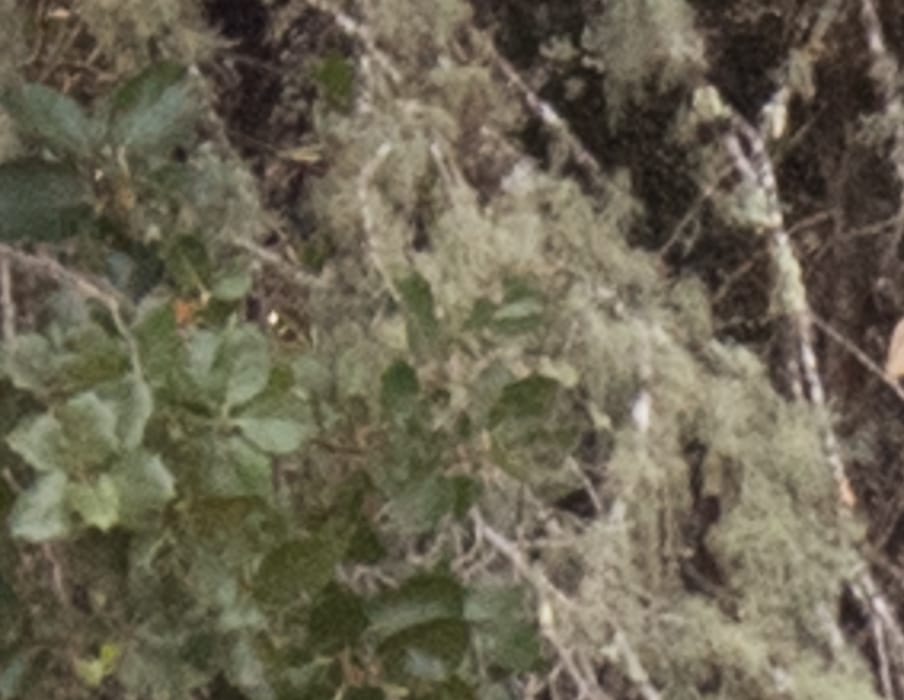

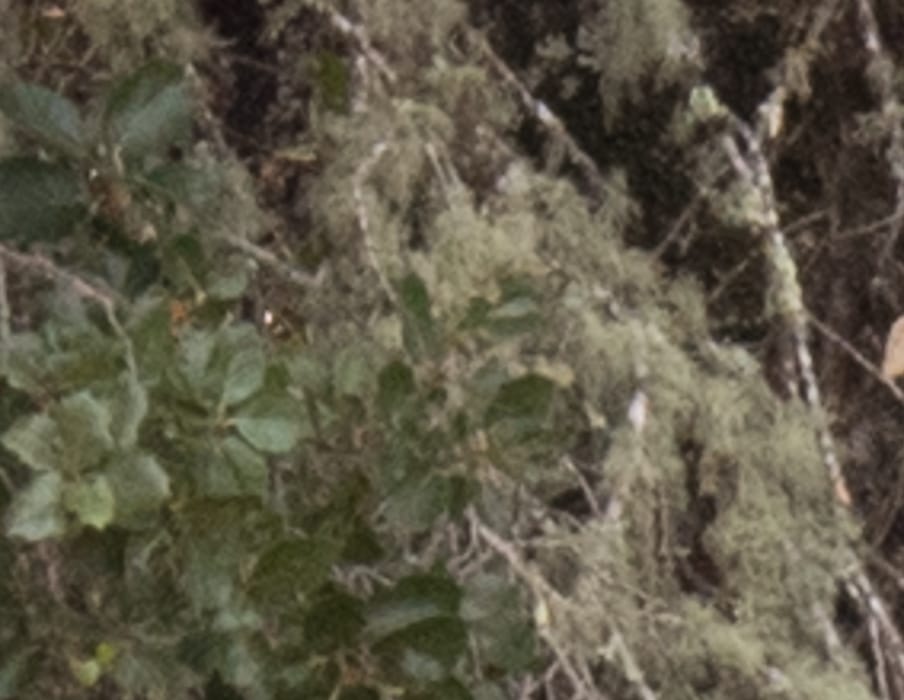
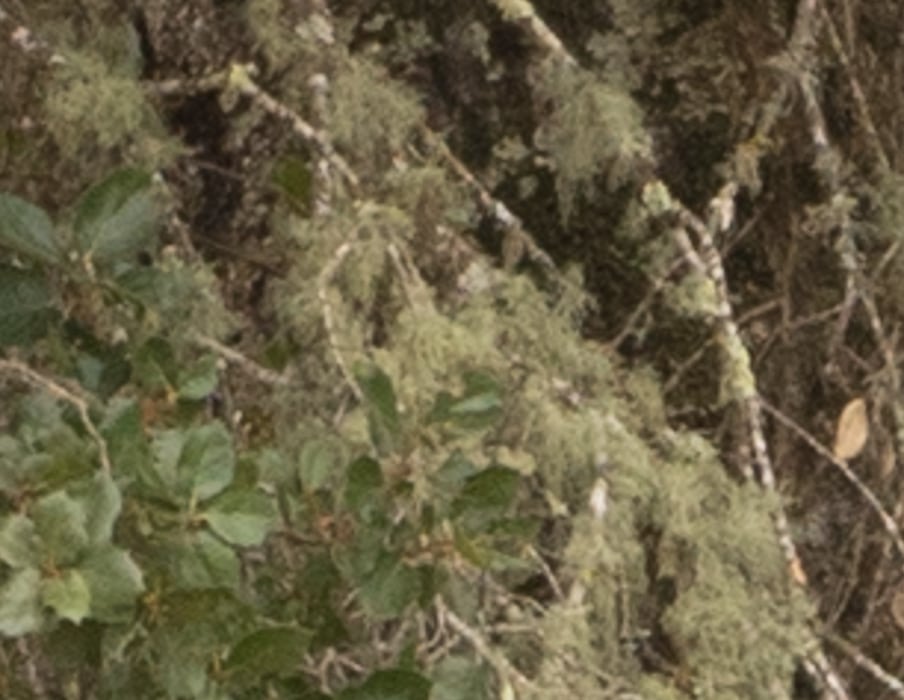
As was the case at 100 mm, we didn’t learn much from that, other than both lenses are very sharp on-axis.
For the corners, because of the camera motion between the two sets of shots, I couldn’t get crops that had the same subject area and the same distance off-axis. I settled for about the same distance off-axis and picked similar foliage.

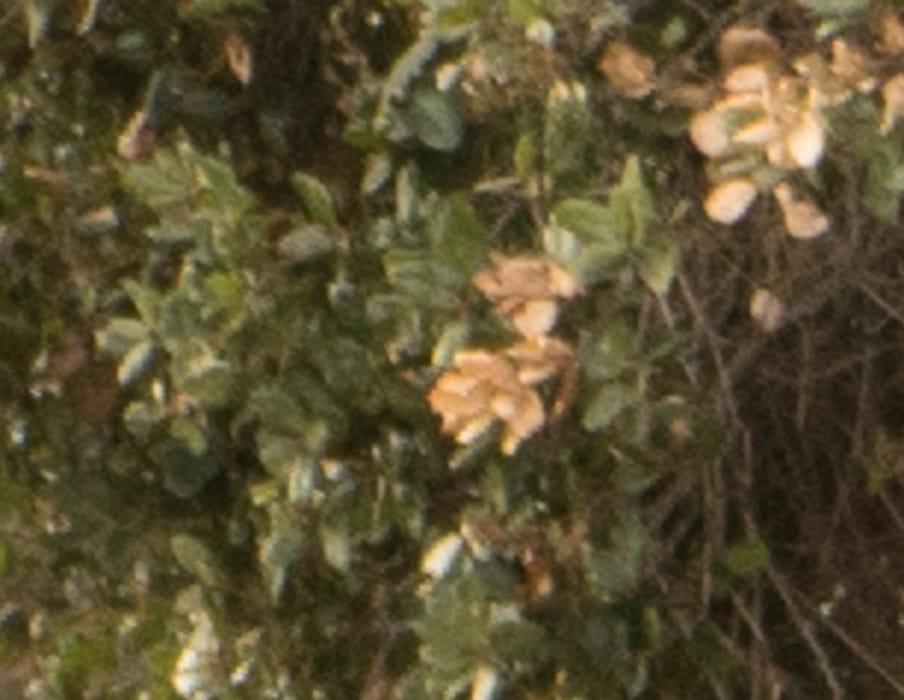
There are nowhere near the sharpness differences we saw in the corner at 100 mm.
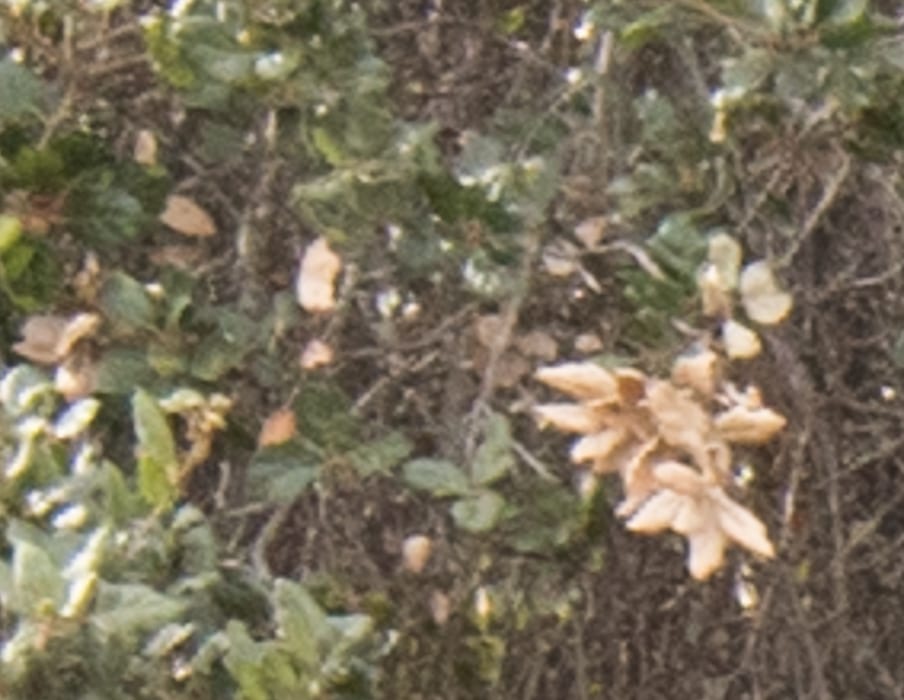


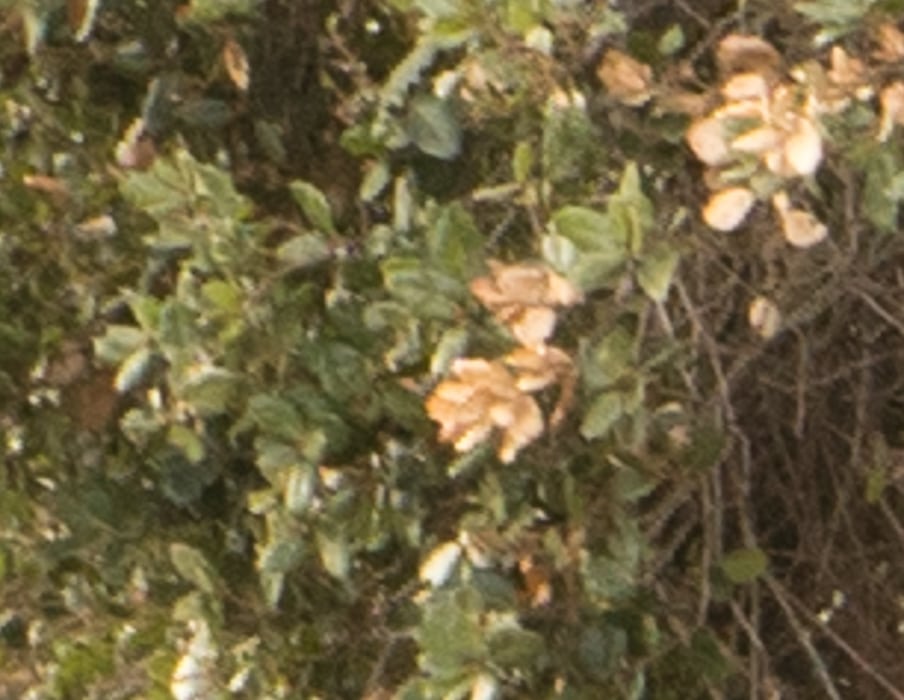
I don’t see much difference here except that more resolution is a good thing. Of course, the color rendition is quite different, but that’s got very little to do with the lenses.
Michael Demeyer says
Jim,
Curious why you didn’t shoot both on the Sony to eliminate the resolution difference?
Michael
JimK says
Maybe I should have. I wanted to do the swap quickly before the light changed, but, as it turned out, I knocked the head in the swap and having the same light wasn’t as important as I’d thought it would be.